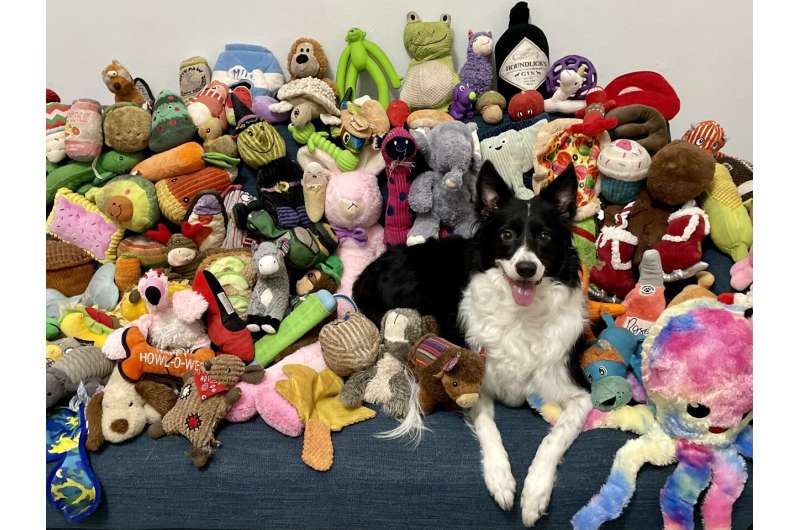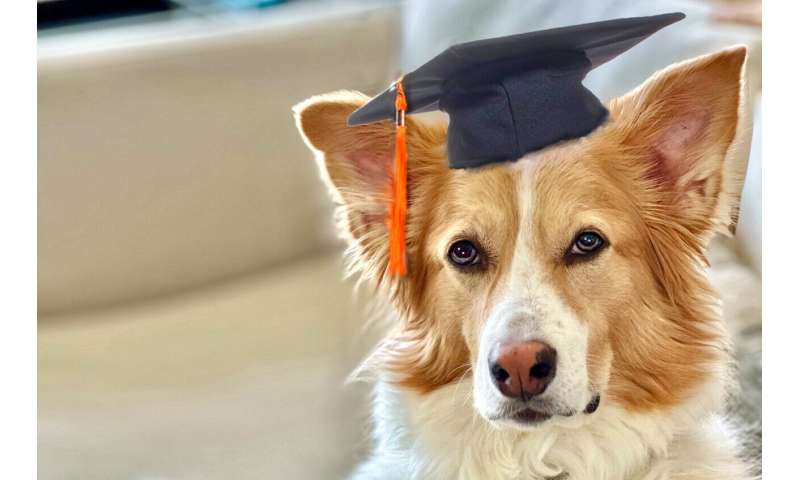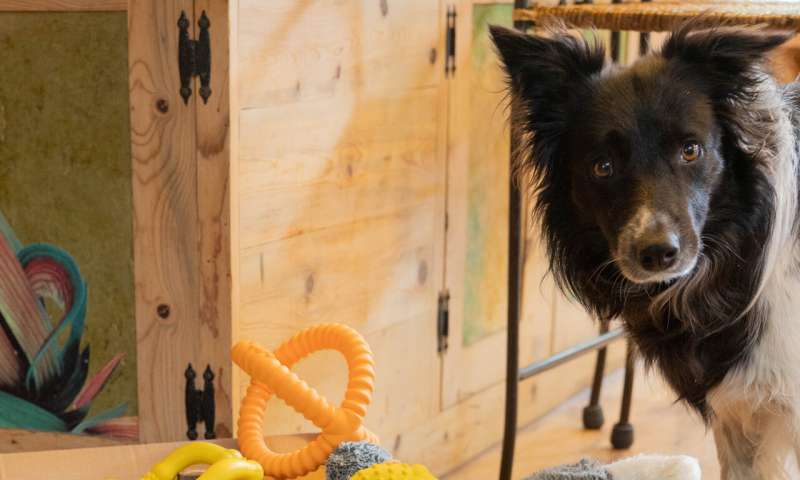This article has been reviewed according to Science X's editorial process and policies. Editors have highlighted the following attributes while ensuring the content's credibility:
fact-checked
peer-reviewed publication
trusted source
proofread
New study reveals characteristics that are shared among a group of uniquely gifted dogs

All dog owners think that their pups are special. Science now has documented that some rare dogs are even more special. They have a talent for learning hundreds of names of dog toys. Due to the extreme rarity of this phenomenon, until recently, very little was known about these dogs, as most of the studies that documented this ability included only a small sample of one or two dogs.
In a new study published in the journal Scientific Reports, researchers from the Family Dog Project (ELTE Eötvös Loránd University, Budapest) shed new light on the characteristics of these exceptional dogs.
In a previous study, the scientists found that only very few dogs could learn the names of objects, mostly dog toys. The researchers wanted to understand this phenomenon better, and so they needed to find more dogs with this ability. But finding dogs with this rare talent was a challenge. For five years, the researchers tirelessly searched across the world for these unique Gifted Word Learner (GWL) dogs. As part of this search, in 2020, they launched a social media campaign and broadcast their experiments with GWL dogs, in the hope of finding more GWL dogs.
"This was a citizen science project," explains Dr.. Claudia Fugazza, team leader. "When a dog owner told us they thought their dog knew toy names, we gave them instructions on how to self-test their dog and asked them to send us the video of the test."
The researchers then held an online meeting with the owners to test the dog's vocabulary under controlled conditions, and if the dog showed he knew the names of his toys, the researchers asked the owners to fill out a questionnaire.
"In the questionnaire, we asked the owners about their dog's life experience, their own experience in raising and training dogs, and about the process by which the dog came to learn the names of his/her toys," explains Dr. Andrea Sommese, co-author.
The researchers found 41 dogs from 9 different countries: the US, the UK, Brazil, Canada, Norway, Netherlands, Spain, Portugal and Hungary. Most of the previous studies on this topic had included border collies. So, while object label learning is very rare even in border collies, it was not surprising that many of the dogs participating in the current study (56%) belonged to this breed. However, the study documented the ability to learn toy names in a few dogs from non-working breeds, such as two Pomeranians, one Pekingese, one Shih Tzu, a corgi, a poodle, and a few mixed breeds.
-

Shira, 6 -year-old, female, Border Collie mix, that was rescued at a young age. She lives in New Jersey, and knows the names of 125 toys. Credit: Tres Hanley-Millman -

Gani (Ganeshani), 5 -year-old, female, Border Collie from Colorado, USA, knows the names of over 100 toys. Credit: Cathy Proenza
"Surprisingly, most owners reported that they did not intentionally teach their dogs toy names, but rather that the dogs just seemed to spontaneously pick up the toy names during unstructured play sessions," says Shany Dror, lead researcher. In addition, the vast majority of owners participating in the study had no professional background in dog training and the researchers found no correlations between the owners' level of experience in handling and training dogs, and the dogs' ability to select the correct toys when hearing its names.
"In our previous studies we have shown that GWL dogs learn new object names very fast," explains Dror. "So, it is not surprising that when we conducted the test with the dogs, the average number of toys known by the dogs was 29, but when we published the results, more than 50% of the owners reported that their dogs had already acquired a vocabulary of over 100 toy names."
"Because GWL dogs are so rare, until now there were only anecdotes about their background," explains Prof. Adam Miklósi, Head of the Ethology Department at ELTE and co-author. "The rare ability to learn object names is the first documented case of talent in a non-human species. The relatively large sample of dogs documented in this study, helps us to identify the common characteristics that are shared among these dogs, and brings us one step closer in the quest of understanding their unique ability."
This research is part of the Genius Dog Challenge research project, which aims to understand the unique talent that Gifted Word Learner dogs have. The researchers encourage dog owners who believe their dogs know multiple toy names to contact them via the Genius Dog Challenge website.
More information: A citizen science model turns anecdotes into evidence by revealing similar characteristics among Gifted Word Learner dogs, Scientific Reports (2023). DOI: 10.1038/s41598-023-47864-5
Journal information: Scientific Reports
Provided by Eötvös Loránd University




















